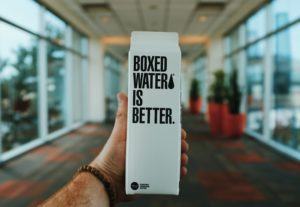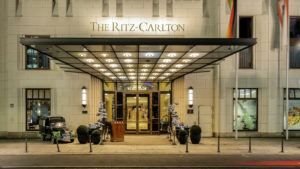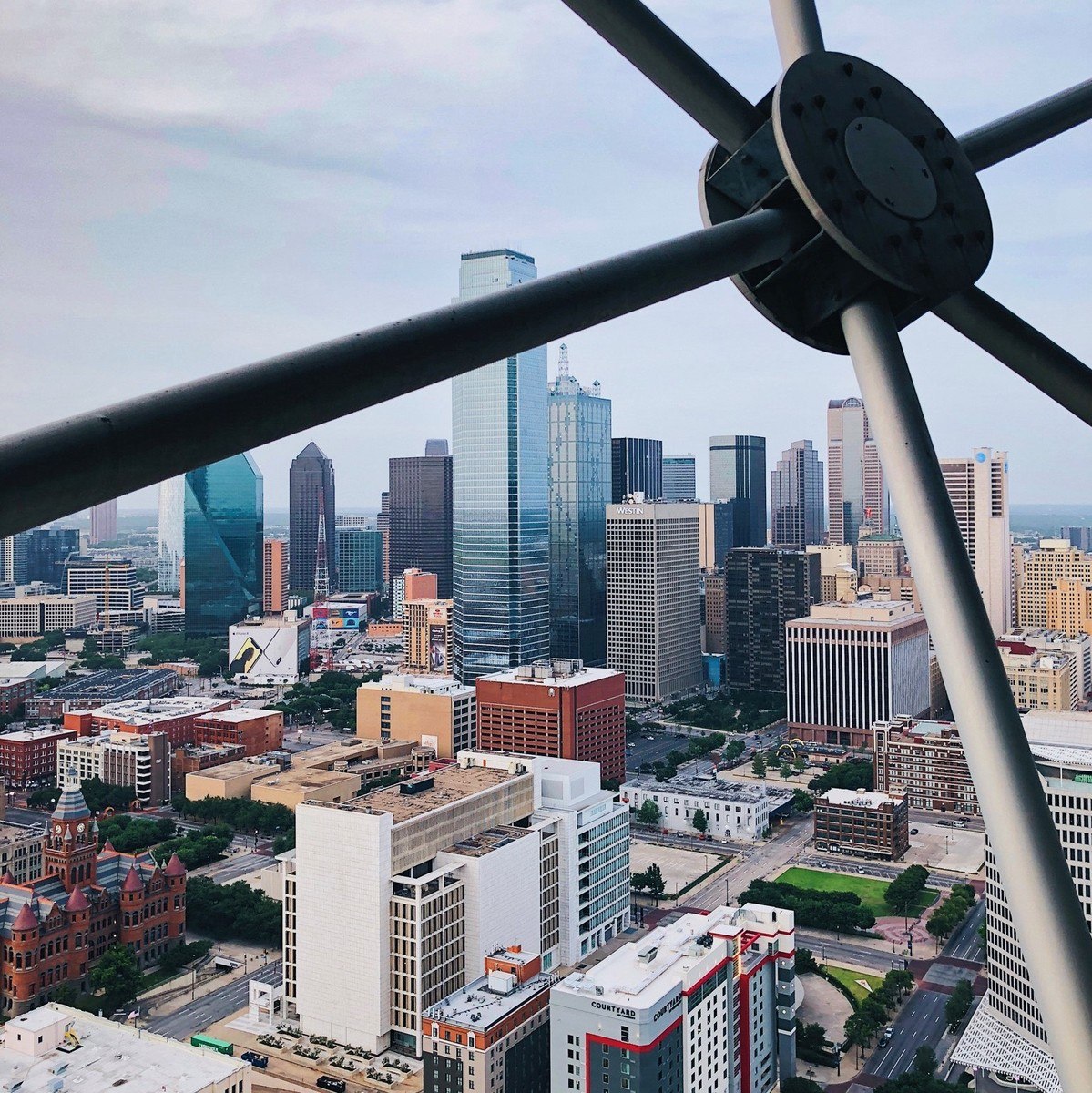Your brand has to be more than just a pretty face!
Building a great brand takes more than just a great appearance. The things people see like your logo, color scheme, and website are important, but they aren’t enough to build sustained growth. It takes more than good looks to keep your customers coming back.
Think about dating. Attractiveness is important for drawing you in for a first date. But attractiveness alone won’t make you want a second date. In the same vein, an attractive brand appearance can draw someone in for a “first date”. But if you want them to commit to being your customer, there better be some substance behind that appearance!
This past year was full of conversations with our clients about how to expand their brand and build something beyond just appearance. This year, we are doubling down on the importance of building a brand that will not just look great but will keep customers coming back for more.
So, what exactly is your brand, and what goes into building it? Here are some of our biggest tips for creating an attractive appearance and the substance to support it.
WHAT IS A BRAND?
 The word “brand” is nothing new. Although it has definitely evolved beyond a logo burned in livestock, the purpose is still the same. Your brand needs to make you stand out and differentiate you from the crowd.
The word “brand” is nothing new. Although it has definitely evolved beyond a logo burned in livestock, the purpose is still the same. Your brand needs to make you stand out and differentiate you from the crowd.
Branding became more prevalent half a century ago as the number of competitors in product areas rose. It doesn’t take a lot to stand out on a shelf when there are only 2 options for bar soap. But when there are 10 options, you’ll need some compelling packaging.
As the options for getting the word out about a product changed, so did the emphasis on branding. Radio and TV gave options to tell the story of your brand that wasn’t always available with packaging. The internet introduced more options and the ability for customers to research like never before.
 Today, the amount of online reviews before purchase has taken research to a new level. A recent study discovered that over half of all online purchasers read reviews before a transaction. In addition, just under half of brick and mortar purchases are preceded by reading online reviews.
Today, the amount of online reviews before purchase has taken research to a new level. A recent study discovered that over half of all online purchasers read reviews before a transaction. In addition, just under half of brick and mortar purchases are preceded by reading online reviews.
As purchasing changes, branding changes but the purpose remains the same. Your brand still has to be what causes you to stand out from competitors. And in today’s changing economy your brand not only has to catch your customer’s eye but it also better have substance behind the style.
There are three main parts to building a great brand: what is seen, what is felt, and what is experienced. In other words, the appearance, the company culture, and customer experience.
The Visual
There is always a visual component of any brand. Your logo, website, brand messaging, color scheme, fonts, photos and brand identity all play a huge role in the visual appeal of your business. After all, they are what your customers see first; what initially draws them in. Let’s take a closer look at a few of these key visual elements.
MESSAGING
![]() The framework of your brand messaging creates the visuals and voice of your brand. It includes elements such as your name, logo, typography (fonts, style, and format), and your marketing message such as your slogan, tagline, and brand pillars. Your brand messaging should resonate with your ideal clients in the context of their needs, wants, and problems. It also needs to be visible and accessible to them through any way they want to connect with you – mobile apps, online searches, social media platforms, etc.
The framework of your brand messaging creates the visuals and voice of your brand. It includes elements such as your name, logo, typography (fonts, style, and format), and your marketing message such as your slogan, tagline, and brand pillars. Your brand messaging should resonate with your ideal clients in the context of their needs, wants, and problems. It also needs to be visible and accessible to them through any way they want to connect with you – mobile apps, online searches, social media platforms, etc.
YOUR LOGO
Your business’s logo is one of the most important visual aspects of your branding strategy. It represents a pictorial image of your brand, and should clearly display an image that tells your customers who you are and what your company represents. When creating a logo, it’s important to make sure that it reflects the company as well as its goals. When people see your logo, you want them to not only know that it’s yours but to think positively about you and your business.
 Take a moment to consider brands like McDonald’s, Nike, or Apple. None of their logos are particularly impressive on their own as a work of art. But they have, over time, become some of the most well-known and recognizable symbols of popular brands that people all over the world love and support.
Take a moment to consider brands like McDonald’s, Nike, or Apple. None of their logos are particularly impressive on their own as a work of art. But they have, over time, become some of the most well-known and recognizable symbols of popular brands that people all over the world love and support.
Learn More: How Good Design Positively Impacts Your Business
BRAND IDENTITY
Business and marketing studies show that more than 75% of consumers are loyal to brands. Your brand identity is a combination of your company’s name, logo, visual image, and marketing content. It helps people remember you not just for the products you offer, but by the experiences they have had with you and your business. These factors are powerful marketing tools that effectively put you in front of your competition. When designed correctly, your brand identity showcases your company’s image and projects your business to potential customers.
Learn More: The Guide to Building a Strong Brand Identity
You may notice that all three of these visual components in a brand also stimulate feelings and emotions within their customers. That’s because for a brand that is effective, what is seen is only part of what shapes what is believed. The true equity of your brand is in what is experienced and felt by your customers. After all, a good logo and sleek website may draw clients in, but it won’t be what keeps them coming back for more. Behind the bright colors and creative fonts lies something much more important to your branding strategy: company culture and customer experience.
THE CULTURE
 Simply put, company culture is the personality of a company. It defines the environment of a workspace and includes the company’s values, expectations, practices, and ethics. A company’s culture is expressed through the approaches, behaviors, and actions of the members within your business. This includes things like hiring practices, how people resolve problems, and how they navigate and handle change.
Simply put, company culture is the personality of a company. It defines the environment of a workspace and includes the company’s values, expectations, practices, and ethics. A company’s culture is expressed through the approaches, behaviors, and actions of the members within your business. This includes things like hiring practices, how people resolve problems, and how they navigate and handle change.
Culture happens. Sometimes it is by accident, but in the best cases, it is intentional. And whether our culture is accidental or intentional, it affects our customers.
Southwest Airlines is a great example of the power of intentional company culture. They have all kinds of out-of-the-ordinary activities and programs that go into building their company culture. The result is that customers feel something different when they fly Southwest, and that is a huge part of their brand.
What are some of the intentional things that could make sure your culture is positively contributing to your brand?
Learn More: Harnessing the Power of Culture
 PURPOSE – WHY YOU EXIST
PURPOSE – WHY YOU EXIST
Your purpose gives your company direction. Without it, you are susceptible to being distracted by every “squirrel” that runs in front of you. But a clear purpose empowers your team to make consistent and strategic decisions that positively build your brand. Once you have defined your purpose, you have to embrace, embody and articulate that purpose consistently to make sure your company is living it out.
VISION – WHAT YOU ARE CREATING
While your purpose gives direction to your organization, the vision paints a picture of the great things that will happen when you live it out. It paints the picture of the good that will come because of your company. Your vision lives in the future, but depicts a clear vision for today of what could be. It is what you aspire to happen because of your purpose.
MISSION – WHAT YOU DO
Your mission statement is what drives your company. It supports the purpose and vision by defining the daily actions of your business.
VALUES – WHO YOU ARE
 The pillars of your brand should sum up the key values you share with your target audience. These are the ideals that you want and aim to uphold throughout the buyer’s journey as they move from interested visitors to paying customers. What does your business stand for and represent? What attracts your customers to your business?
The pillars of your brand should sum up the key values you share with your target audience. These are the ideals that you want and aim to uphold throughout the buyer’s journey as they move from interested visitors to paying customers. What does your business stand for and represent? What attracts your customers to your business?
S’well aims to rid the world of plastic water bottles while designing and producing products that are charitable, beautiful and sustainable. Ben & Jerry’s has built their business around their product, economic and social missions, striving to make the world a better place through charitable work and activism funded by their sustainable financial growth. And Starbucks has a mission to “inspire and nurture the human spirit – one person, one cup, and one neighborhood at a time”. They aim to “create a culture of warmth and belonging, where everyone is welcome”.
THE EXPERIENCE
When a customer thinks of your business or sees your logo, you want them to have a thought or feeling that is bigger than just the logo itself. As we mentioned, your logo is not what creates return customers. They return not just when your business is visually appealing, but when it makes them feel something. Here are some keys to a great customer experience.
PUT THE CUSTOMER FIRST
![]() Great customer experiences start when we move beyond thinking about ourselves and truly start thinking about our customers. I know we all think we do this, but very few companies actually do it well.
Great customer experiences start when we move beyond thinking about ourselves and truly start thinking about our customers. I know we all think we do this, but very few companies actually do it well.
When you start an interaction with a potential customer, what is your focus? Are you committed to finding ways to serve them and truly help them get what they want? Or are you thinking about how you can help them just enough to get them to do what you want?
This is why your company’s culture is so important. If part of your DNA is to truly serve your customers, you will approach your interactions and relationships with customers differently. You will be focused on their wants and needs more than your own. This may occasionally cost you a sales opportunity as you let the potential customer know you are not the best option for them. However, this type of customer service can also lead to customers who are raving fans. The repeat/referral business from a raving fan will more than make up for any opportunities you have to walk away from putting your customers first.
 Sometimes putting customers first is not as drastic as walking away from a sale. Sometimes it is as simple as getting past our curse of knowledge. We can’t assume our customers know everything we know.
Sometimes putting customers first is not as drastic as walking away from a sale. Sometimes it is as simple as getting past our curse of knowledge. We can’t assume our customers know everything we know.
For example, if you have a retail space you have likely laid out the space in a way that is clear to you. The curse of knowledge would be assuming that because you clearly know where things are, your customers do, too. A simple fix could be to use signage to clearly mark what your customers look for the most. (On a side note – if you have a retail space, what your customers are looking for most is likely not your product but your restroom, so sign it clearly!)
If you want to take your customer service to the next level, use clear signs and layer that with friendly employees ready to help people find what they are looking for. As a part of your customer-focused culture, never let your employees point to where something is. Have your employees walk the customer to what they want to make sure they find it easily.
BE PREDICTABLE
Some of the companies with the best customer experiences are ridiculously predictable – and that’s a great thing! If you are enjoying a delicious chicken sandwich at Chick-Fil-A and you tell an employee “thank you,” you can predict how they will respond. You are going to get the response “my pleasure” every single time.
Companies known for great customer experiences don’t just have one or two rock-star employees that serve the customer. They have trained all of their employees to respond with great customer service, and that builds the brand reputation.
Learn More: Creating and Retaining Happy Customers
A restaurant wanting to be known for great customer service can’t have 75% of their wait staff ca rrying out the plan. The 25% not giving great service will diminish the reputation of the 75% that are.
rrying out the plan. The 25% not giving great service will diminish the reputation of the 75% that are.
The Ritz-Carlton knows the value of predictability. They have empowered every employee with a $2,000/day budget to “make it right or delight” their guests. That means every employee is empowered to provide great experiences for their guest. Going above and beyond is not reserved for the select few but expected of the entire team. This means that great customer experiences at the Ritz-Carlton are predictable.
BE UNPREDICTABLE
No, that is not a typo. Once you have some set standards for a great customer experience that are predictable, you can add in elements that are unpredictable. Those unexpected moments can leave a powerful, lasting impression.
The unpredictable part happened after we finished our meal. The waiter returned with our bill which was accompanied by a complimentary plate of the famous Tex-Mex dessert, sopapillas. That plate of warm, fried dough, covered in sugar and honey cost the restaurant next to nothing, but that element of surprise left an impression that I am telling you about years later!
Learn More: Three Tips for Creating Delight In Your Business
 How could you elevate your customer’s experience with something unpredictable? As your creative juices get flowing, let me give you a few tips that will set you up for success:
How could you elevate your customer’s experience with something unpredictable? As your creative juices get flowing, let me give you a few tips that will set you up for success:
- You don’t have to do it for everyone. Be strategic with who you choose to make sure you get the most impact. You may consider something unpredictable for first-time customers to get them back or you may choose your most consistent customers to elevate their delight.
- It doesn’t have to be expensive. The Tex-Mex restaurant could have comped our entire bill, but that could put a serious dent in their profit. Instead, they spent a few cents on sopapillas. It’s significantly more cost-effective and frankly, more creative!
- Make it sustainable. Choose something that fits into the rhythm of what you already do. The Tex-Mex restaurant didn’t add anything to their menu for the experience. The sopapillas were already in their flow, they just made a few extra for their first-time guests.
When you combine putting your customers first with predictable and unpredictable behaviors, you’re building your brand. And when people see your logo, there are going to be positive feelings and memories associated with you. That is something powerful for a brand!
 DO SOMETHING FOR YOUR BRAND
DO SOMETHING FOR YOUR BRAND
So, how is your brand doing?
That’s a question we all have to ask ourselves on a regular basis because it changes. In one season your logo and color scheme might be perfect for your company. Later on, however, it may not represent the growth and maturation that has occurred. The actions you took to intentionally affect your culture when you were a company of 10 employees in one office may no longer work now that you are 50 employees in multiple locations. And the great customer experiences you became known for years ago have likely been copied by competitors. That means that for your brand to stand out you might need to raise the bar a little.
The bottom line is branding is an ongoing process of standing out from your competition. If you become complacent, your brand will become commonplace and be ignored. Be intentional to go back regularly and evaluate whether or not your brand is still helping you stand out.
For a quick exercise to help you evaluate your brand, download our free resource below. Depending on what you discover, you may want to start the process of updating your brand. You can do this internally or with the help of a branding agency. Either way, we’d be glad to have a conversation and see how we can help!




